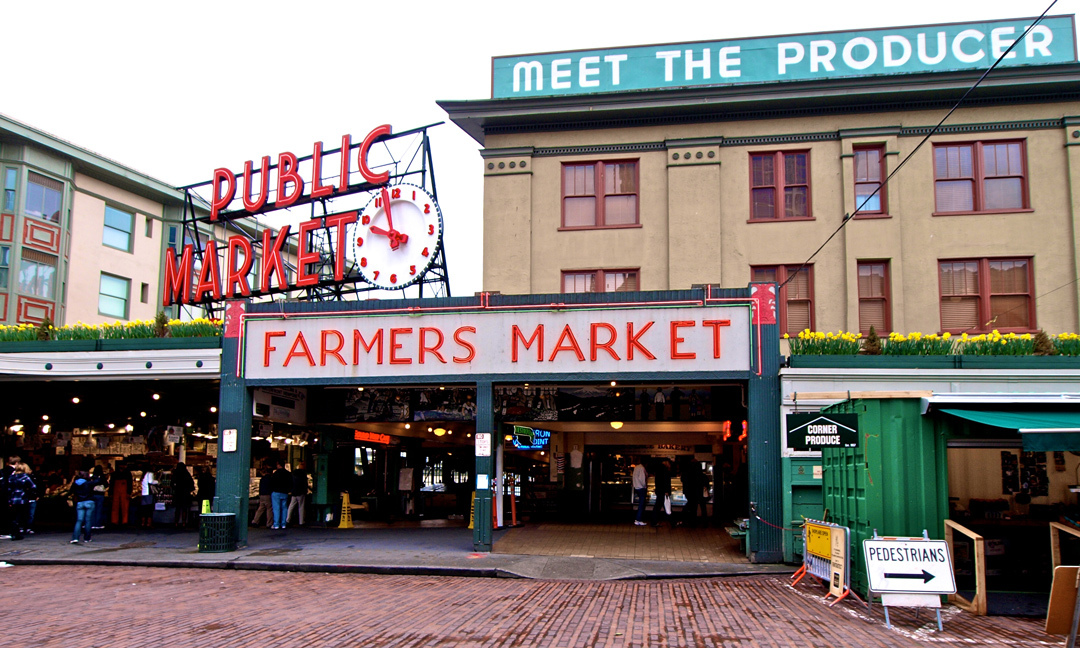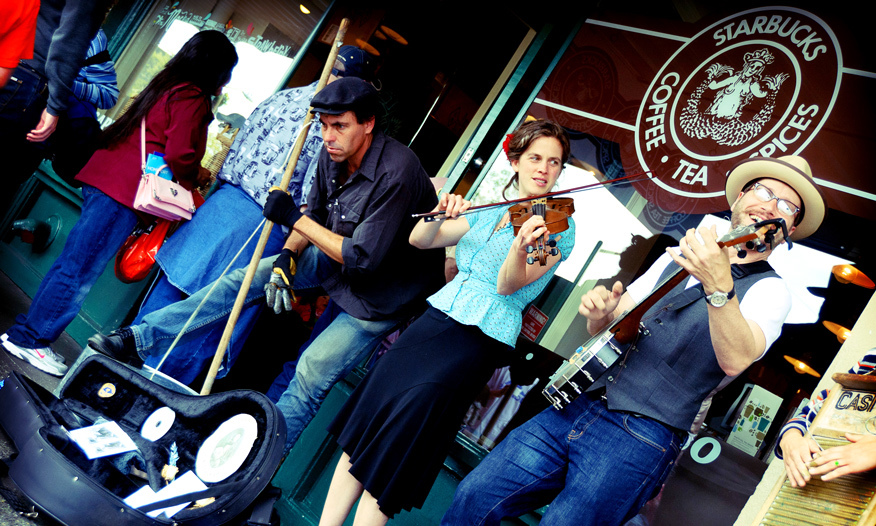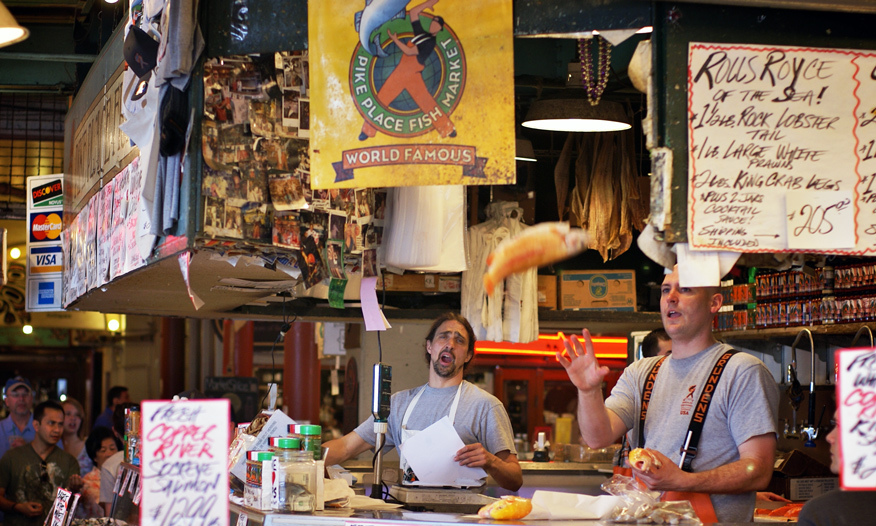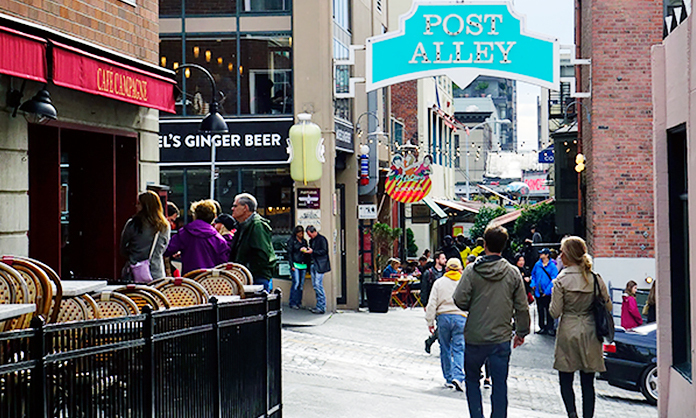GROUPON GUIDE TO CHICAGO
Pike Place Market: See It or Skip It?
BY: Molly Metzig |Aug 9, 2018
Sightseeing in Seattle

Admission to Space Needle and Chihuly Garden
400 Broad St., Seattle • 1.3 mi
$66.15
Space Needle and Chihuly Garden and Glass

Adventure Walk for One or Group Scavenger Hunts Available
50% discount_off
Wacky Walks

Adult / Kids Tickets or VIP Entry to Gig Harbor Vintage Aero Museum
1108 26th Avenue Northwest, Gig Harbor • 26.0 mi
20% discount_off
9 bought
Gig Harbor Vintage Aero Museum

Self-Guided City Scavenger Hunt Adventure for Up to Four Teams
2901 Western Ave., Seattle • 1.3 mi
62% discount_off
Puzzling Adventures

3 Toddler Tuesday Classes at Holly Farm for One or Two Children
19329 51st Avenue Southeast, Bothell • 16.8 mi
25% discount_off
3 bought
Holly Farm - Bothell, WA

Pioneer Tour, Combo Tour for 1 or 2
7716 Ohop Valley Road East, Eatonville
19% discount_off
Pioneer Farm Museum

Top Seller
Scenic Seattle Brunch, Dinner & City Skyline Cruises with Stunning Views
901 Fairview Avenue North, Seattle • 1.5 mi
26% discount_off
Waterways Cruises

Interactive Exhibits & Outdoor Adventure at Hands On Children's Museum
414 Jefferson Street Northeast, Olympia • 46.8 mi
20% discount_off
Hands On Children's Museum

Hot Air Balloon Rides – Scenic Views of Snohomish & Puget Sound
10600, Snohomish • 22.9 mi
17% discount_off
Snohomish Balloon Rides

Up to 11% Off Morning or Sunrise Hot Air Balloon Adventure
10600 Airport Way, Snohomish • 22.9 mi
11% discount_off
Balloon Depot - Snohomish

Up to 20% Off on Museum at Wing Luke Museum of the Asian Pacific American Experience
719 South King Street, Seattle • 0.7 mi
20% discount_off
Wing Luke Museum of the Asian Pacific American Experience

Enjoy an Aerial View of Space Needle on a Private Helicopter Tour
8700 East Marginal Way South, Tukwila • 5.8 mi
30% discount_off
Helicopters Northwest

Admission Tickets to Sky View Observatory
700 4th Avenue, Seattle • 0.1 mi
$27
Sky View Observatory

Up to 40% Off on Farm Tour at Tahoma Vista Fiber Mill
15631 159th Lane Southeast, Yelm
40% discount_off
Tahoma Vista Fiber Mill

Wine Tasting Experience for One, Two or Four with Club Perks
17621 128th Pl NE Building B, Woodinville • 12.7 mi
50% discount_off
Martedi Winery
Restaurants Near You

Savor Delicious Meals with eGift Card from Restaurant.com
80% discount_off
Restaurant.com

Food and Drinks for Dine-In and Carryout at Blueberry Hill
5769 95th St, Oak Lawn • 13.3 mi
40% discount_off
Blueberry Hill

One or Two Tickets to Kashmir - The Led Zeppelin Show on May 3rd
9301 West 63rd Street, Hodgkins • 14.2 mi
20% discount_off
Salerno's Pizzeria & Sports Bar - Hodgkins

Trending
Get a code for Panera’s Unlimited Sip Club® + a Panera Bread® Gift Card
52% discount_off
Panera Bread

American Breakfast, Brunch, and Drinks
3064 South Cicero Avenue, Cicero • 6.9 mi
40% discount_off
Mr. Stacks Breakfast and Lunch

Mexican Food Deals for Groups of 4 or More
2115 Bloomingdale Road, Glendale Heights • 23.8 mi
40% discount_off
Pozoleria Amiguitas

$25 or $50 General Spend Credit Toward Columbian Food
1552 North Kedzie Avenue, Chicago • 4.8 mi
28% discount_off
ArePA George

Up to $40 to Spend at Jimmy's Famous Burgers Hyde Park Bronzeville
5042 South Cottage Grove Avenue, Chicago • 5.4 mi
20% discount_off
Jimmys Famous Burgers Hyde Park Bronzeville

Taco Time Made Better at TacoVen – $15, $30, & $60 Options
2937 West Armitage Avenue, Chicago • 4.7 mi
33% discount_off
TacoVen

Weekday Cabaret Prix Fixe Dinner for 2, 4, 6 with 1 Martini per Person
3524 N Halsted St, Chicago • 4.8 mi
23% discount_off
Kit Kat Club

Savor Mexican Flavors with $20 Food and Drink Credit
8313 South Cottage Grove Avenue, Chicago • 9.5 mi
20% discount_off
1 bought
Pepe's Restaurant

Top Seller
$50 or $100 Gift Cards to California Pizza Kitchen
4999 Old Orchard Road, Skokie • 14.1 mi
16% discount_off
Major Rocket - California Pizza Kitchen

Enjoy a Signature Meal For One or $25 Credit Toward Any Breakfast
1609 West Division Street, Chicago • 2.8 mi
25% discount_off
2 bought
HEYDAY EATERY

Up to $40 to Spend at Pita Pita Mediterranean Grill Palatine
1278 East Dundee Road, Palatine • 26.8 mi
28% discount_off
Pita Pita Mediterranean Grill Palatine

Indulge in a 7-Course Peking Duck Feast for Two at Lao Sze Chuan
520 Michigan Avenue, Chicago • 0.8 mi
38% discount_off
Lao Sze Chuan




